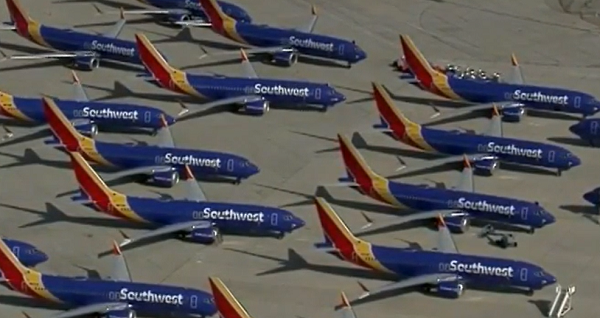More uncertainty over 737 MAX as FAA identifies new 'risk'
27 June, 2019
3 min read
By joining our newsletter, you agree to our Privacy Policy


The US Federal Aviation Administration has again emphasized it will not be rushed into returning the Boeing 737 MAX to service as it confirmed it had uncovered a new "potential risk" in the troubled aircraft.
In a statement posted Wednesday evening US time, the FAA said it was following a thorough process “not a prescribed timeline” for returning the MAX to passenger service.
The global 737 MAX fleet has been grounded since March as Boeing works on software changes designed to prevent problems thought to have played a role in two fatal crashes of MAX aircraft.
It remains unclear when the planes will be allowed back in the sky and the FAA in its latest statement repeated its stance that it would lift the prohibition order on the MAX “when we deem it is safe to do so”.
READ: American announces final MD-80 revenue flights.
“We continue to evaluate Boeing’s software modification to the MCAS and we are still developing necessary training requirements,’’ it said.
“We also are responding to recommendations received from the Technical Advisory Board (TAB). The TAB is an independent review panel we have asked to review our work regarding 737 Max return to service.
“On the most recent issue, the FAA’s process is designed to discover and highlight potential risks. The FAA recently found a potential risk that Boeing must mitigate.”
The FAA did not identify the new risk but US media said it related to a microprocessor failure that occurred during a simulation of a runaway stabilizer trim.
CNN reported that the microprocessor failure could push the nose of the plane towards the ground.
It said Boeing engineers were trying to determine if the issue could be fixed by changing the software or the company would have to replace the microprocessors on all existing MAX aircraft.
Boeing confirmed that the problem had been identified during recent simulator sessions conducted as part of the FAA’s review of its software update.
The company said the regulator had identified “an additional requirement that it has asked the company to address through the software changes that the company has been developing for the past eight months”.
“The FAA review and process for returning the 737 MAX to passenger service are designed to result in a thorough and comprehensive assessment,'' it said.
“ Boeing agrees with the FAA's decision and request, and is working on the required software.
“Addressing this condition will reduce pilot workload by accounting for a potential source of uncommanded stabilizer motion.
“Boeing will not offer the 737 MAX for certification by the FAA until we have satisfied all requirements for certification of the MAX and its safe return to service."
Get the latest news and updates straight to your inbox
No spam, no hassle, no fuss, just airline news direct to you.
By joining our newsletter, you agree to our Privacy Policy
Find us on social media
Comments
No comments yet, be the first to write one.

